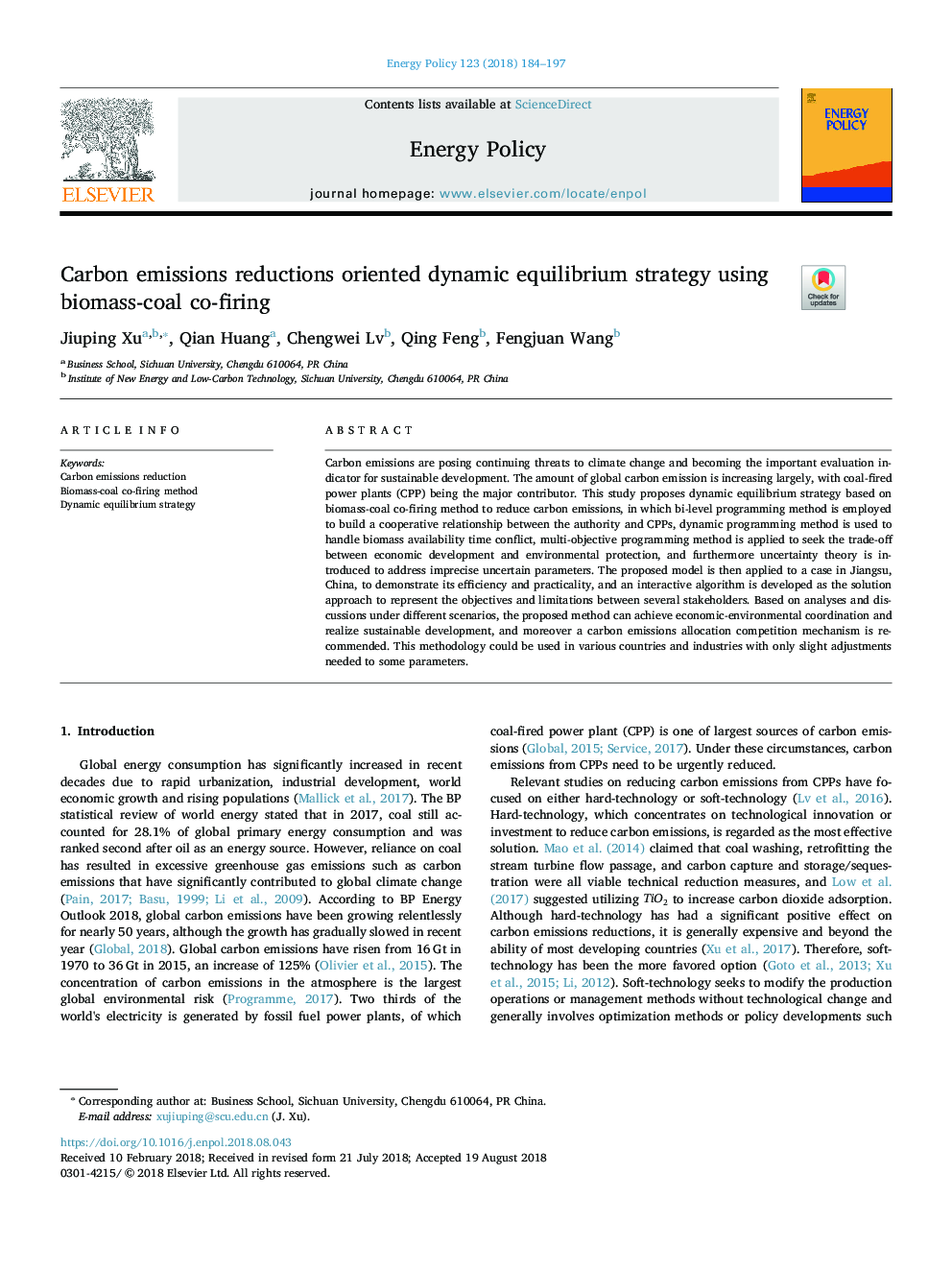| Article ID | Journal | Published Year | Pages | File Type |
|---|---|---|---|---|
| 10134663 | Energy Policy | 2018 | 14 Pages |
Abstract
Carbon emissions are posing continuing threats to climate change and becoming the important evaluation indicator for sustainable development. The amount of global carbon emission is increasing largely, with coal-fired power plants (CPP) being the major contributor. This study proposes dynamic equilibrium strategy based on biomass-coal co-firing method to reduce carbon emissions, in which bi-level programming method is employed to build a cooperative relationship between the authority and CPPs, dynamic programming method is used to handle biomass availability time conflict, multi-objective programming method is applied to seek the trade-off between economic development and environmental protection, and furthermore uncertainty theory is introduced to address imprecise uncertain parameters. The proposed model is then applied to a case in Jiangsu, China, to demonstrate its efficiency and practicality, and an interactive algorithm is developed as the solution approach to represent the objectives and limitations between several stakeholders. Based on analyses and discussions under different scenarios, the proposed method can achieve economic-environmental coordination and realize sustainable development, and moreover a carbon emissions allocation competition mechanism is recommended. This methodology could be used in various countries and industries with only slight adjustments needed to some parameters.
Keywords
Related Topics
Physical Sciences and Engineering
Energy
Energy Engineering and Power Technology
Authors
Jiuping Xu, Qian Huang, Chengwei Lv, Qing Feng, Fengjuan Wang,
